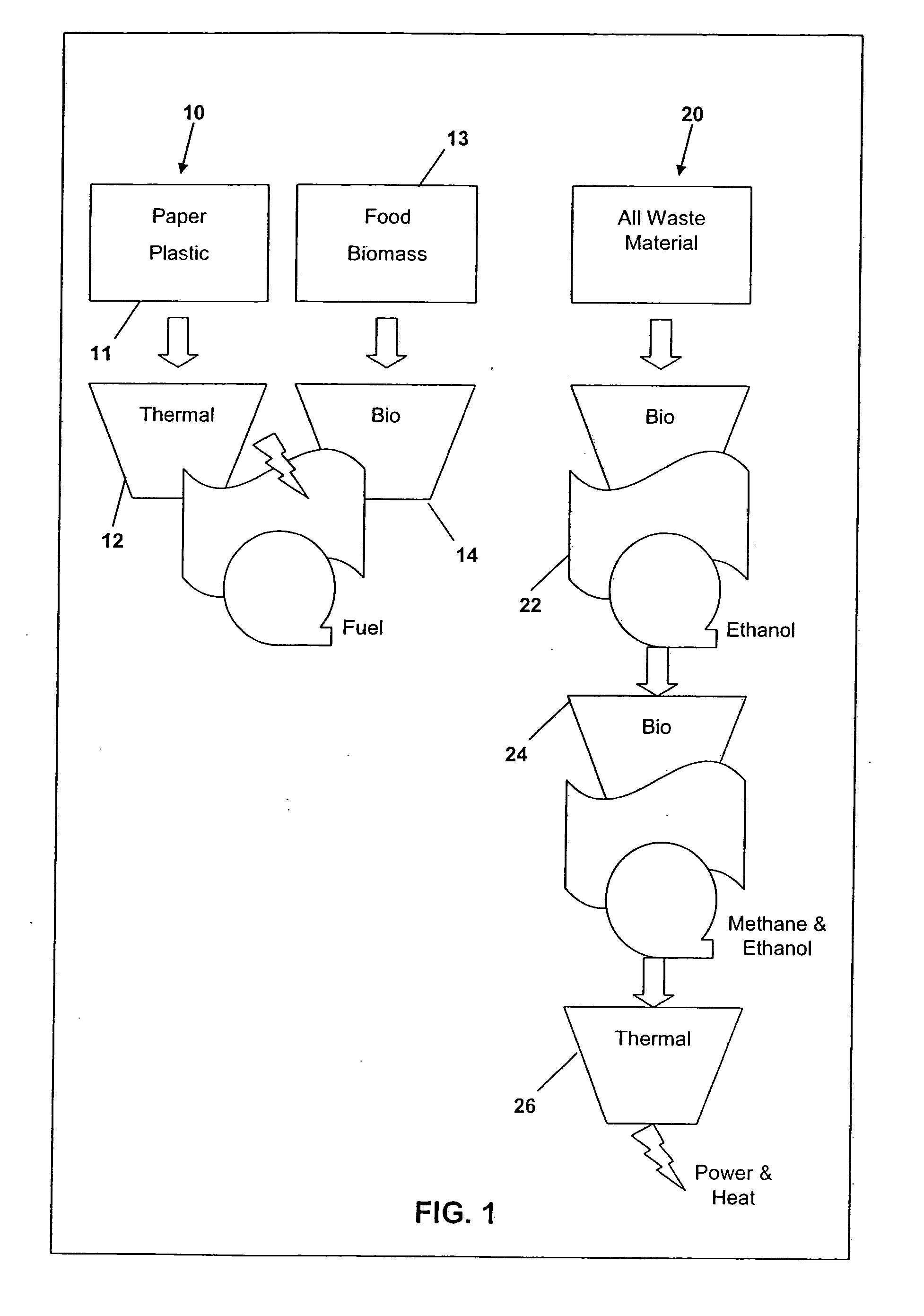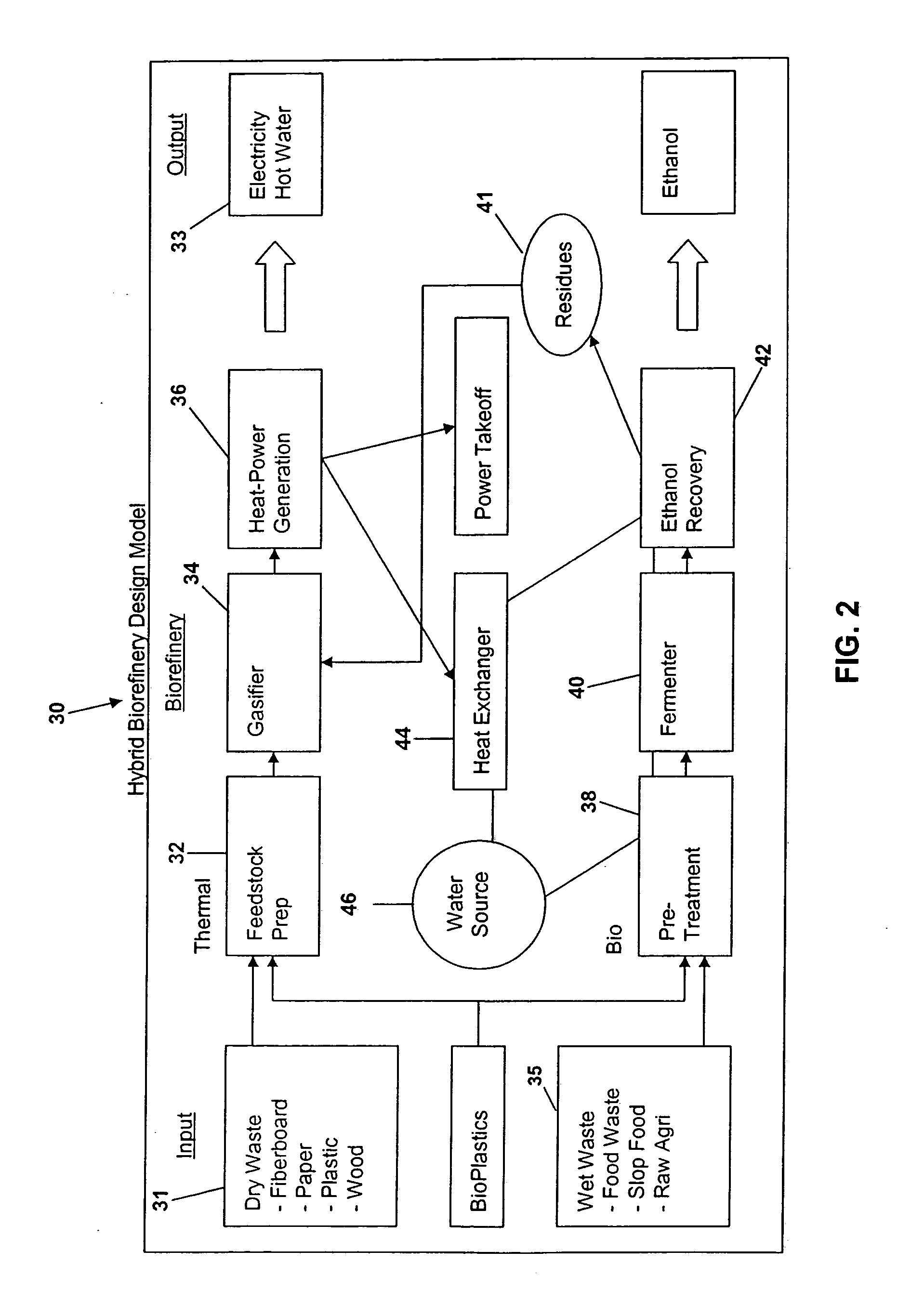Integrated thermochemical and biocatalytic energy production system
a biocatalytic energy and production system technology, applied in the field of organic waste processing, can solve the problems of easy sensitivity of components and achieve the effect of energy cost and easy sensitivity to enzyme hydrolysis and fermentation
- Summary
- Abstract
- Description
- Claims
- Application Information
AI Technical Summary
Benefits of technology
Problems solved by technology
Method used
Image
Examples
examples
[0063]
examples 1-2
[0064] Examples 1 and 2 demonstrate the mass balance of food and organic waste into ethanol and / or electricity in accordance with one embodiment of the present teachings.
example 1
(“I1”) In-Line Model
[0065] In this Example, waste is subjected to enzyme hydrolysis and yeast fermentation within a bioreactor. The waste has a residence time of less than 24 hrs in the bioreactor after which the ethanol is separated out, and the solids are pelletized. The ethanol and pellets are stored and can be used on demand. The pellets are gasified to make producer gas and mixed with the ethanol for air injection into a diesel engine. A detailed schematic of the process is shown in FIG. 8, while an entire Mathematical Model is shown in FIGS. 9 and 10.
[0066] With reference to FIG. 8, wet and dry wastes from a combined source are delivered into a grinder / shredder 180 through a gravity feed hopper 181. While the shredder 180 may operate at different power levels, in this exemplary illustration, the shredder operates at a level of 3 hp. In the shredder 180, the waste is ground to a suitable maximum size before being channeled to the bioreactor 182. Once the materials enter the b...
PUM
 Login to View More
Login to View More Abstract
Description
Claims
Application Information
 Login to View More
Login to View More - R&D
- Intellectual Property
- Life Sciences
- Materials
- Tech Scout
- Unparalleled Data Quality
- Higher Quality Content
- 60% Fewer Hallucinations
Browse by: Latest US Patents, China's latest patents, Technical Efficacy Thesaurus, Application Domain, Technology Topic, Popular Technical Reports.
© 2025 PatSnap. All rights reserved.Legal|Privacy policy|Modern Slavery Act Transparency Statement|Sitemap|About US| Contact US: help@patsnap.com



